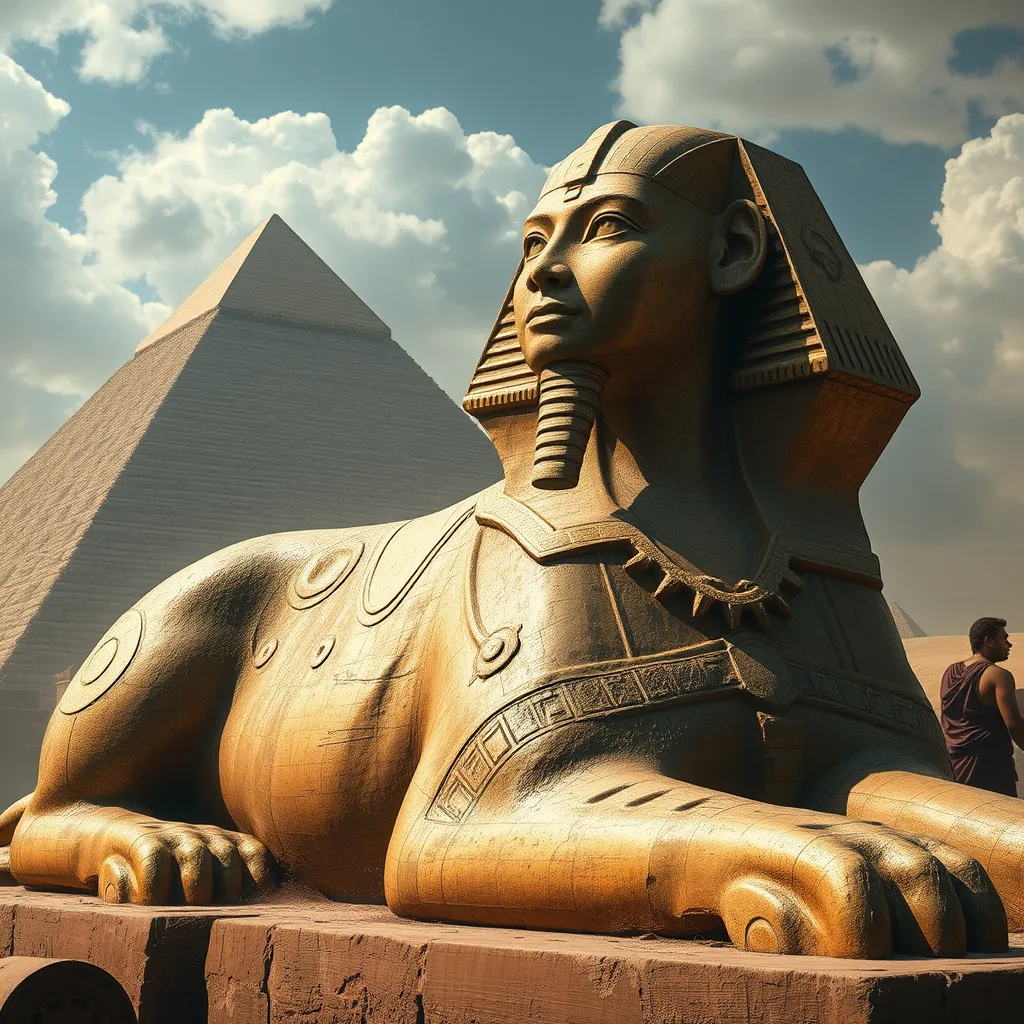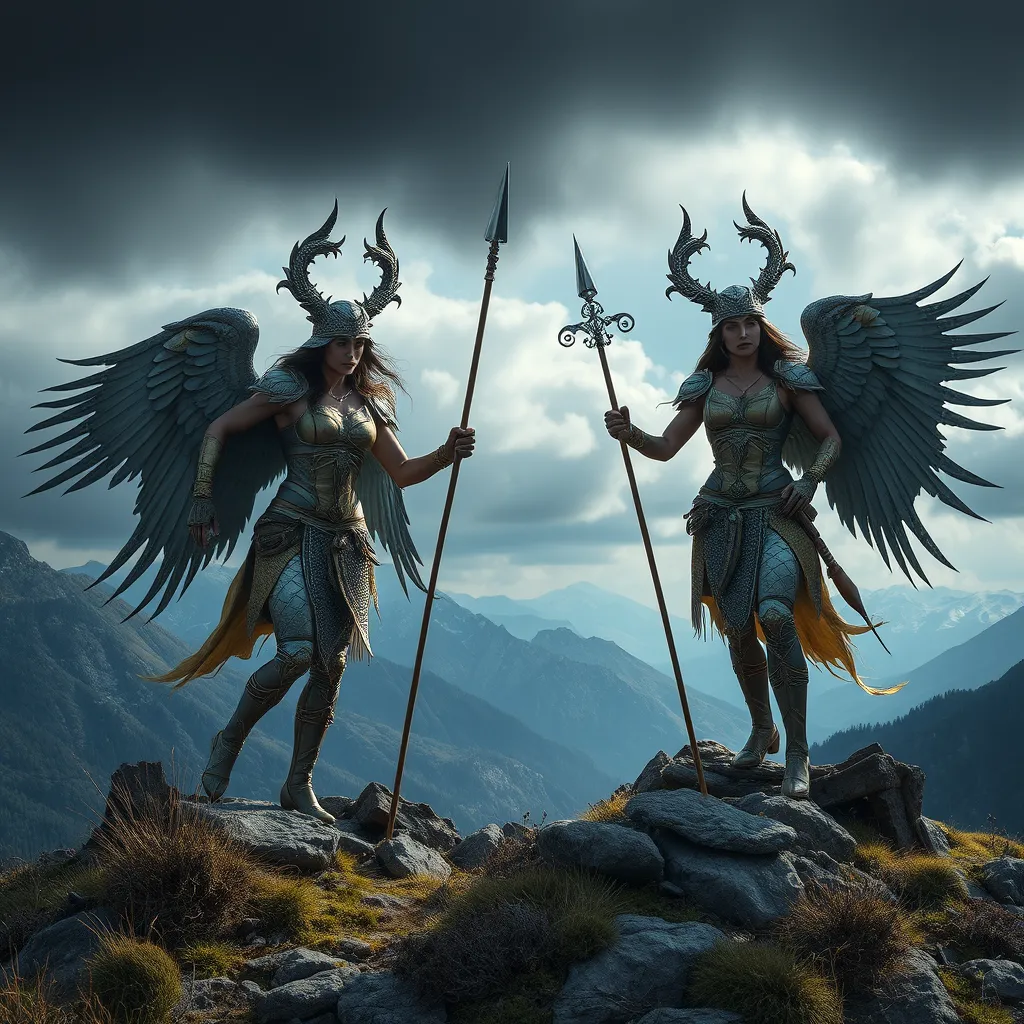The Sphinx and the Gods: Encounters with the Divine in Mesopotamian Myths
I. Introduction
Mesopotamian mythology is a rich tapestry of stories, gods, and heroes that have fascinated scholars and enthusiasts alike for centuries. With its roots in the cradle of civilization, this mythology offers insight into the ancient world’s understanding of existence, the cosmos, and the divine. Within these narratives, encounters with the gods play a crucial role, shaping the lives of mortals and the fate of civilizations.
Among the various symbols that populate these myths, the Sphinx stands out as a particularly enigmatic figure. Traditionally associated with mystery and knowledge, the Sphinx serves as a guardian of sacred truths and divine secrets. This article explores the role of the Sphinx in Mesopotamian mythology, its significance as a symbol of mystery, and its connections to divine encounters.
II. The Sphinx: A Symbol of Mystery and Knowledge
The Sphinx, with its lion’s body and human head, has origins that stretch beyond Mesopotamia, finding its place in Egyptian and Greek mythologies as well. However, its importance in Mesopotamian culture is noteworthy. The Sphinx represents the intersection of human intellect and animal strength, embodying the complexities of knowledge and power.
In Mesopotamian lore, the Sphinx often functions as a guardian at the thresholds of sacred spaces, safeguarding divine knowledge from the unworthy. Its presence poses riddles and challenges, forcing those who seek access to confront their own understanding and wisdom. This role parallels other mythological creatures, such as the Lamassu, a protective deity depicted with a human head, lion’s body, and bird’s wings, which also served as a guardian of sacred spaces.
III. The Pantheon of Mesopotamian Gods
The Mesopotamian pantheon is vast, featuring major deities such as Anu, the sky god; Enlil, the god of wind and storms; and Ishtar, the goddess of love and war. Each deity possesses distinct characteristics and powers, influencing the lives of humans in various ways. The relationship between gods and humans is complex, marked by favor and wrath, as mortals navigate their existence in the shadow of divine beings.
The Sphinx’s role in this pantheon can be seen as a mediator of divine messages. By presenting challenges and riddles, it encourages individuals to seek deeper understanding and connection with the divine. This interaction often leads to transformative experiences, where mortals gain wisdom and insight that allows them to navigate their relationships with the gods.
IV. Mythical Encounters: Stories of Mortals and Deities
Many key Mesopotamian myths showcase encounters between mortals and deities, revealing the complexities of these interactions. The Epic of Gilgamesh, one of the most famous works of ancient literature, narrates the journey of Gilgamesh, a king who seeks immortality and understanding in the face of divine forces. His encounters with various gods highlight the themes of wisdom, mortality, and the quest for knowledge.
Similarly, the story of Inanna, the goddess of love and war, illustrates her interactions with the underworld and the challenges she faces. The Sphinx’s influence can be subtly traced in these narratives, where the essence of a riddle or a challenge mirrors the Sphinx’s role in guarding knowledge and truth. The themes of wisdom, challenge, and transformation resonate throughout these tales, emphasizing the importance of divine encounters in personal growth.
V. Symbolism of the Sphinx in Divine Contexts
The Sphinx is emblematic of the hero’s journey, often representing the challenges that must be faced to attain greater wisdom and understanding. In many myths, heroes encounter the Sphinx or similar creatures at critical junctures in their quests, where they must solve riddles or face tests of character. This symbolism underscores the Sphinx’s duality as both a protector of knowledge and a formidable adversary.
- Knowledge: The Sphinx symbolizes the pursuit of knowledge, where understanding can lead to enlightenment.
- Power: Encounters with the Sphinx can reflect the struggle for power, both divine and mortal.
- Fear: The Sphinx also embodies the fear of the unknown, challenging heroes to confront their deepest insecurities.
VI. Rituals and Worship: Engaging with the Divine
In Mesopotamian religion, rituals were crucial for engaging with the divine and seeking favor from the gods. These practices included offerings, prayers, and elaborate ceremonies designed to appease the deities and invite their blessings. Oracles and divination played a significant role in interpreting the will of the gods, guiding individuals in their decisions and actions.
The Sphinx’s presence in rituals and temple art often served as a reminder of the mysteries that lie within divine interactions. Temples would feature sculptures and depictions of the Sphinx, reinforcing its role as a guardian of sacred knowledge and a mediator between the earthly and the divine. Engaging with the Sphinx through rituals allowed worshippers to confront their own wisdom and understanding.
VII. Legacy and Influence on Later Mythologies
The impact of Mesopotamian myths extends beyond the region, influencing neighboring cultures and shaping subsequent mythologies. The Sphinx, in particular, evolved significantly in Greek and Egyptian traditions. In Greek mythology, the Sphinx became known for her riddles, famously challenging Oedipus, whose answer revealed his fate and destiny. In Egyptian culture, the Sphinx is often associated with the pharaohs, symbolizing strength and protection.
As these myths traveled and transformed, the representations of divine encounters also evolved. The Sphinx’s role as a guardian and challenger persisted, reflecting the enduring nature of these archetypes in the human psyche.
VIII. Conclusion
In conclusion, the Sphinx serves as a powerful symbol of mystery and knowledge within Mesopotamian mythology. Its role in divine encounters highlights the complexities of the relationship between mortals and gods, emphasizing themes of wisdom, challenge, and transformation. As we reflect on these ancient narratives, we recognize their enduring influence in contemporary culture, where the mysteries of existence and the quest for understanding continue to resonate.
The legacy of the Sphinx and its symbolic significance in the context of divine encounters remind us of the timeless human desire to seek knowledge, confront challenges, and navigate the complexities of our existence in relation to the divine.



